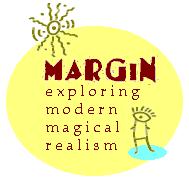

I N T E R P R E T I V E R E A D I N G
HAZARDING CHANCE
r e a d i n g a n g e l a c a r t e r ' s W I S E C H I L D R E N
BY S.L. DEEFHOLTS
I N T R O D U C T I O N
ANGELA CARTER'S novel Wise Children is a rollicking text that tells a lively story with satirical wit and wry, bawdy observation. Even without analysis, it stands on its own as an engaging story, with a few (well, all right -- more than a few) stretched coincidences and a mischievously humorous narrator. On the other hand, the text is packed with allusions: it affectionately satirizes the "showbiz" scenes of the era, evokes Shakespeare -- often in the most unexpected ways -- on virtually every page, contains both vivid and subtle manifestations of Magical Realism, chucks in some postmodern motifs and then sprinkles in a few scenes of carnivalesque vigour to add extra spice to an already potent goulash. Of course, naming every manifestation of structural or explicit allusion or satire could become tiresome for both myself and the reader -- plus, it would take all the fun and spontenaiety out of reading the book.PARTS 1 AND 2 ~ DUALITIES . . . AND DUPLICITY -- The motif of twins and a discussion of narrative hijinksBefore we go any further, be warned that this is not a review of Wise Children, but rather a reading of the novel. As such, it will contain "spoilers." That having been said, I must add that I will be looking at the various techniques, allusions and ideas that emerge in the novel, and my examination of any aspects of the plot will be undertaken in that context only. So, if you don't mind knowing some of what will happen in the novel, then certain aspects of what this book encompasses may pique your interest. Feel free to browse, to read portions non-sequentially and even to skip some sections altogether.
I should also mention that although I will be discussing the way in which different aspects of Wise Children can be interpreted as Magical Realism, bear in mind that Magical Realism itself is complex and diverse -- you need look no further than the stories on this site to get a glimpse of the many different ways that it can manifest in a narrative. So, don't think that any single one of its manifestations in Wise Children are a requirement for a given tale to be Magical Realism -- above all, Magical Realism is visceral. I'm simply providing an analytical framework for looking at how it functions in a given text.
I shall focus on those examples of the various motifs in the text that struck me as being particularly clever, well-integrated or subtly crafted.
But first -- some background information. Legend has it that Angela Carter wrote this novel after she knew she had been diagnosed with cancer, when the cloud of mortality loomed over her consciousness. She had a small son and a husband whom she would be leaving behind. In the context of this, the echoing refrain of the text -- "What a joy it is to dance and sing!" -- seems particularly potent. For me, knowing the circumstances under which Carter produced this novel, which is so much about the joys of life, laughter, lighthearted revelry and renewal, adds extra force to its implicit admonition to cherish life as you live it. Certainly, Carter's protagonist and narrator, Dora Chance, has seized the days of her life and reveled in them.
The book begins on Dora's 75th birthday. She and her twin sister Nora are the unacknowledged and illegitimate daughters of an icon of the British Stage, Sir Melchior Hazard. When their mother died in childbirth, they were raised by their mother's landlady, "Grandma" Chance, because their father refused to have anything to do with them.
While Sir Melchior Hazard trod the boards of the most venerable of theatrical institutions, spewing Shakespeare to great acclaim, Dora and Nora debuted and throve as the Lucky Chances in the "low" theatres of the era -- the music halls and colorful vaudeville venues.
What ensues is an intricate tale, packed with allusions and jumps through time that all blend together to create an almost dreamlike effect. The past and the present jumble together as Dora takes us on a wild, guided tour of her family history.
And so, having thoroughly mixed our metaphors by stirring up the stew and setting the stage, we can begin to examine some of the motifs and manifestations in this remarkable text.
AUTHOR'S NOTE: All references to pages refer to this version of the book: Wise Children, by Angela Carter, © 1991, Vintage: London; paperback edition 1992.
PART 3 ~ LIFE AS A CARNIVAL -- Manifestations of the carnivalesque
PART 4 ~ ALL THE WORLD'S A STAGE -- Shakespeare is inevitable in this book, and the allusions explicated here are only a sampling
Layout, design & revisions ©1999, 2000, 2001, 2002, 2003 Tamara Kaye Sellman, Webmaster
Active home URL: http://www.magical-realism.com
(also: https://www.angelfire.com/wa2/margin/index. html)TERMS OF USE: This site contains copyrighted materials, including but not limited to text and graphics. You may not use, copy, publish, upload, download, post to a bulletin board, include in any weblog or otherwise transmit, distribute or modify any elements of this site in any way, except that you may download one copy of such contents on any single computer for your own personal, non-commercial use, provided you do not alter or remove any copyright, author attribution or other proprietary notices.Rev'd 2003/03/27